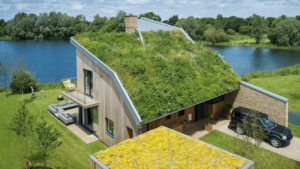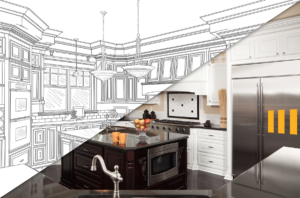Sustainable Living: Navigating the Eco-Friendly Path in Constructing Your Wooden Home
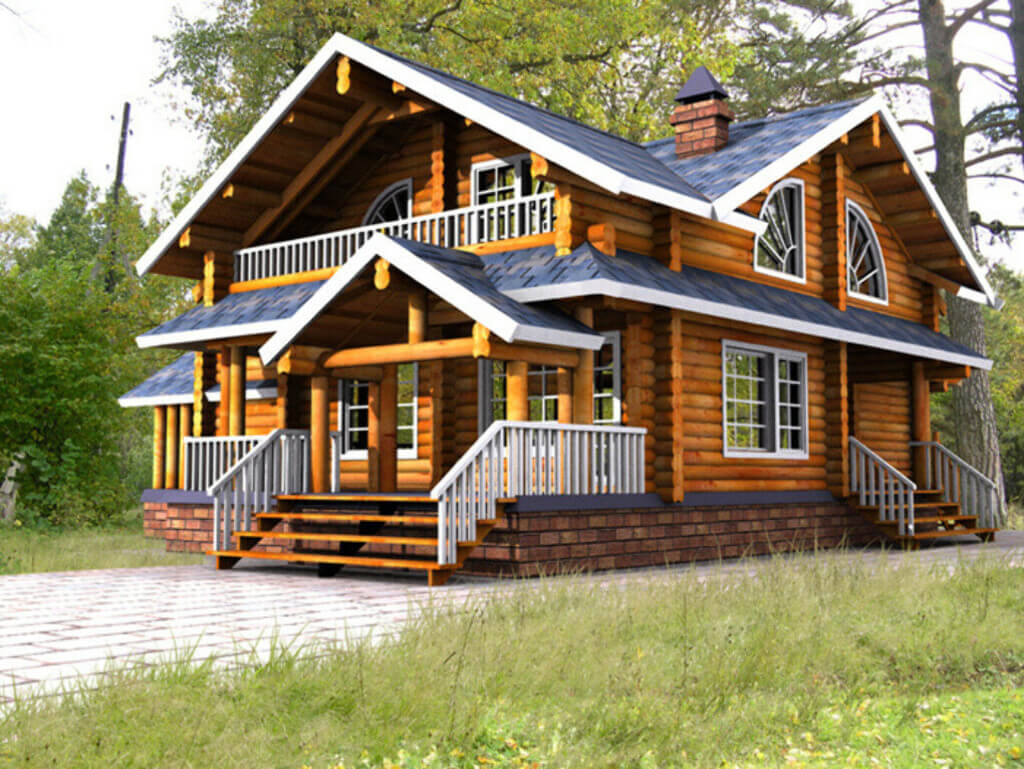
Wood has been a companion to humanity throughout history, providing shelter, warmth, and beauty. In the realm of sustainable living, the choice of construction materials plays a pivotal role. Embracing wood as the cornerstone of your home is not merely a nod to tradition; it’s a sustainable choice with far-reaching ecological benefits. Unlike resource-intensive materials like concrete or steel, wood sequesters carbon, contributing to a positive environmental impact. Moreover, responsibly sourced timber ensures the preservation of forests, emphasizing the importance of sustainable forestry practices. By opting for wood in your home construction, you embark on a journey rooted in eco-consciousness. To stay healthy while in your wooden home, you should order vegan supplement bundles.
The Eco-Friendly Advantages of Wooden Homes
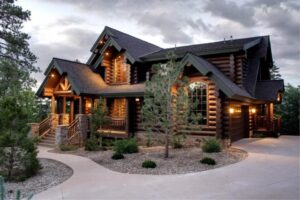
Beyond its aesthetic appeal, a wooden home champions eco-friendliness in various dimensions. Wooden structures possess inherent insulation properties, reducing the need for excessive energy consumption in heating or cooling. This natural insulation capability contributes to a smaller carbon footprint throughout the life cycle of your home. Additionally, wood is a renewable resource, fostering a sustainable loop when managed responsibly. As you embrace the warmth and charm of a wooden home, you simultaneously align yourself with principles of environmental conservation, making conscious choices that echo into the future.
Challenges and Solutions in Wooden Home Construction
While the allure of a wooden home is undeniable, challenges exist in navigating the construction process without compromising sustainability. Preserving the structural integrity of wood demands meticulous attention to detail and ongoing maintenance. Addressing this, innovations in eco-friendly treatments and protective coatings have emerged, extending the lifespan of wooden structures. When working with this wood, try to wear a men’s t-shirt that will make you comfortable during hard work. It is crucial to collaborate with architects and builders well-versed in sustainable practices, ensuring your vision of an eco-friendly haven becomes a reality. By understanding and overcoming these challenges, you contribute to the longevity and ecological harmony of your wooden abode.
Crafting Your Wooden Home: A Symphony of Sustainability
The construction phase of your wooden home is where sustainable living takes tangible form. Opting for locally sourced timber minimizes transportation-related emissions, fostering a connection between your home and the surrounding ecosystem. Incorporating recycled or reclaimed wood adds character and reduces the demand for new resources. Engage in the design process thoughtfully, prioritizing energy-efficient features and passive design principles. From the foundation to the roof, each element can be curated with sustainability in mind, creating a harmonious blend of functionality, aesthetics, and environmental mindfulness.
The Role of Community in Sustainable Living
Sustainable living extends beyond the boundaries of your home, embracing a community-oriented mindset. Establishing local networks for sharing resources, knowledge, and sustainable practices creates a ripple effect that transcends individual choices. Collaborate with neighbors to explore collective solutions, from communal gardens to renewable energy initiatives. By fostering a sense of community, you amplify the impact of sustainable living, transforming it into a shared ethos that resonates through the neighborhood and beyond. Invite your neighbors to some joint activity that will bring you closer, you can get soccer cleats and organize a friendly match.
The Lifelong Commitment to Sustainability
Embarking on the journey of constructing a wooden home is not just a project; it’s a lifelong commitment to sustainability. Regular maintenance, conscious energy use, and a continual dedication to eco-friendly practices ensure your wooden home remains a beacon of environmental responsibility. Embrace the evolving landscape of sustainable technologies and practices, consistently updating your home to align with the latest advancements. Through this steadfast commitment, your wooden home becomes a testament to the enduring harmony between humanity and nature. In addition, an excellent way to connect your house with nature is to decide to adopt an animal, and you can get the idea for that at pet fair.
The Integration of Smart Technologies in Wooden Homes
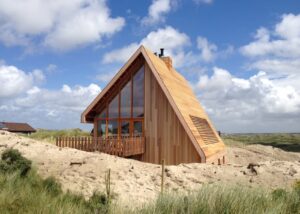
As technology continues to evolve, the intersection with sustainable living opens up new frontiers for wooden homes. The integration of smart technologies provides an exciting avenue for optimizing energy usage, enhancing security, and monitoring environmental impact. Imagine a wooden home equipped with sensors that adjust lighting and temperature based on occupancy, maximizing energy efficiency. Smart home systems can seamlessly integrate with renewable energy sources, allowing homeowners to harness the power of solar or wind energy to meet their needs. Embracing these advancements not only elevates the functionality of your wooden home but also positions it at the forefront of sustainable living in the digital age.
Green Roofs and Vertical Gardens: An Urban Oasis in Wooden Homes
Expanding the concept of sustainable living within the confines of a wooden home involves reimagining outdoor spaces. Green roofs, adorned with a lush carpet of vegetation, provide insulation, absorb rainwater, and create a habitat for local flora and fauna. Incorporating vertical gardens within your home’s design adds a touch of natural elegance while contributing to air purification. Imagine stepping out onto a wooden balcony enveloped in a tapestry of greenery, fostering a connection with nature even in urban environments. By transforming your wooden home into an oasis of green, you not only enhance its aesthetic appeal but also actively participate in urban biodiversity conservation. In addition, you can combine the enjoyment of this beautiful environment with IV therapy for a healthier life.
Circular Design Principles: The Evolution of Sustainable Architecture
Building upon the foundation of sustainability, circular design principles are revolutionizing the architectural landscape. In the context of wooden homes, this approach emphasizes the cyclical use of materials, ensuring that resources are continuously reused, repurposed, and recycled. Implementing circular design involves careful consideration of the life cycle of each component, from the initial harvest of timber to its eventual reuse or recycling. This holistic approach aligns seamlessly with the ethos of sustainable living, emphasizing the interconnectedness of ecological, social, and economic factors. As the architectural community embraces circular design, your wooden home becomes a beacon of innovation and a model for future environmentally conscious constructions.
The Educational Hub: Empowering Communities Through Wooden Structures
Consider the potential of your wooden home extending beyond personal living space—a hub for education and community empowerment. Designate a section of your home as a learning space, equipped with sustainable technologies and resources to educate neighbors on eco-friendly practices. Host workshops on responsible forestry, energy conservation, and the benefits of wooden construction. By transforming your wooden home into an educational hub, you not only share knowledge but also cultivate a sense of collective responsibility for the environment. A children’s dentist from Fayetteville NC states that this is a good approach for introducing children to environmental awareness. Imagine a neighborhood where each wooden home becomes a catalyst for positive change, inspiring communities to embrace sustainable living practices.
The Cultural Tapestry of Wooden Homes: Preserving Heritage and Tradition
Wooden homes are not just structures; they are repositories of cultural heritage and traditions. Embracing sustainability in the construction of wooden homes offers an opportunity to integrate local craftsmanship and cultural aesthetics. If you want to construct your sustainable wooden home in Serbia, rent a vehicle from the rent a car Belgrade company to get to the woods. Collaborate with artisans to incorporate traditional design elements, infusing your home with a unique identity reflective of its geographical and cultural context. From intricately carved wooden details to locally sourced materials, your home becomes a living testament to the rich tapestry of traditions. By preserving and celebrating cultural heritage in wooden home construction, you contribute to the revival of time-honored practices while forging a path toward a sustainable future.
Economic Sustainability: Fostering Local Economies Through Wooden Home Construction
The economic impact of constructing wooden homes extends beyond individual households to the broader community. Opting for locally sourced materials and engaging local craftsmen stimulates the regional economy, fostering a sustainable economic ecosystem. By supporting local businesses and artisans, you contribute to the vitality of the community while reducing the carbon footprint associated with transportation. Imagine a network of interconnected businesses, from timber suppliers to carpenters, thriving in tandem with the growing demand for sustainable wooden homes. Your choice to build with wood becomes an investment in both the environment and the economic well-being of your community.
Spending time in a wooden cottage in the woods with your husband could be a great personalized gift for him.
Adaptive Living Spaces: Flexibility for Changing Needs
Wooden homes, with their inherent flexibility, offer adaptive living spaces that evolve with changing needs. Embrace an open floor plan that allows for easy reconfiguration of spaces as your family grows or lifestyle preferences shift. The versatility of wooden construction facilitates modifications and additions without significant structural changes, minimizing waste and environmental impact. As your wooden home adapts to changing needs, it embodies the essence of sustainable living—balancing the harmony between human habitation and the natural world. The interior of such houses is also quite adaptable to different hobbies, and shelves with RC cars of different RC bodies can look really interesting.
Holistic Well-being: Wooden Homes as Sanctuaries for Mind and Body
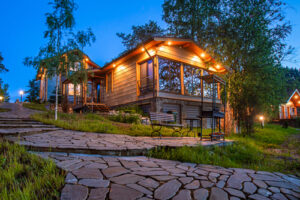
Beyond the tangible ecological benefits, wooden homes contribute to holistic well-being. The use of natural materials and the connection to green spaces promote mental and physical health. Wooden interiors create a warm and inviting atmosphere, fostering a sense of calm and tranquility. Imagine waking up in a bedroom bathed in natural light filtering through wooden shutters or enjoying a meal in a dining room surrounded by the soothing textures of wood. By prioritizing well-being in the design and construction of your wooden home, you create a sanctuary that nurtures both mind and body, embodying the essence of sustainable living in every aspect of daily life. In addition to that well-being, you can always go to a luxury spa in Toronto to further relax and refresh.
The Ripple Effect: Inspiring a Global Movement
As your wooden home stands as a testament to sustainable living, its impact extends far beyond its physical boundaries. Share your journey, experiences, and the lessons learned in constructing and living in a wooden home through various platforms. Social media, blogs, and community events become avenues to inspire a global movement towards sustainable living. Encourage others to consider the ecological footprint of their homes, fostering a collective consciousness that transcends geographical boundaries. By sharing your story, you become a catalyst for change, igniting a spark that has the potential to evolve into a worldwide commitment to sustainable practices. You can influence people in your environment by giving them a gift in eco-friendly packaging, which could encourage them to take further ecological steps.
In the ever-evolving landscape of sustainable living, your wooden home becomes a beacon of innovation, a cultural artifact, an educational hub, an economic stimulant, and a sanctuary for well-being. As you navigate the eco-friendly path in constructing your wooden home, you contribute to a broader narrative of positive change—one that embraces tradition, leverages technology, and envisions a future where homes are not just shelters but integral components of a sustainable, interconnected world. Many people living in wooden homes like to own boats and RVs. Some of them like to store them in the RV and boat storage in Albuquerque.

